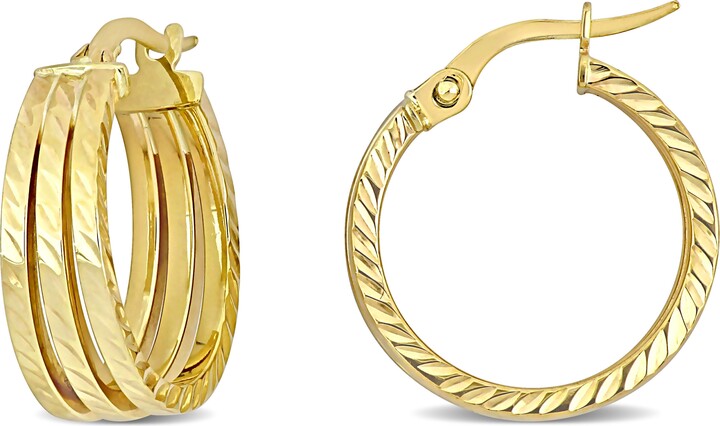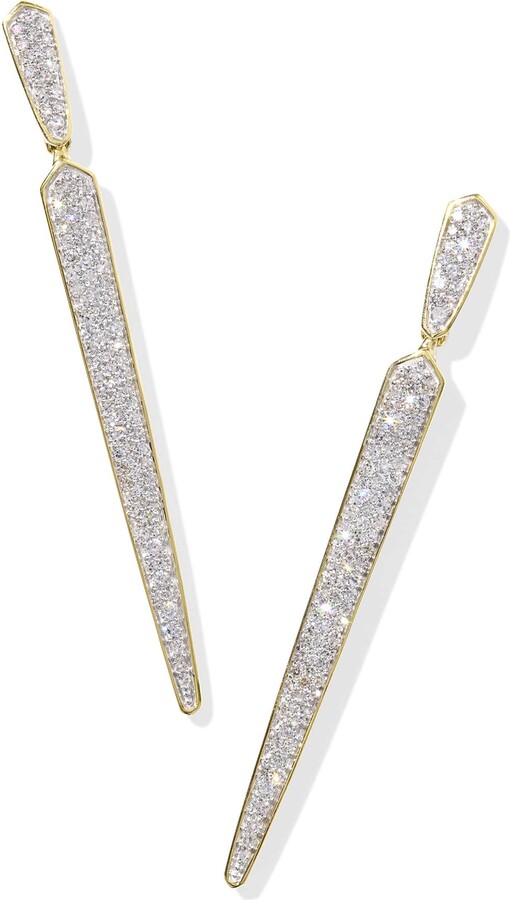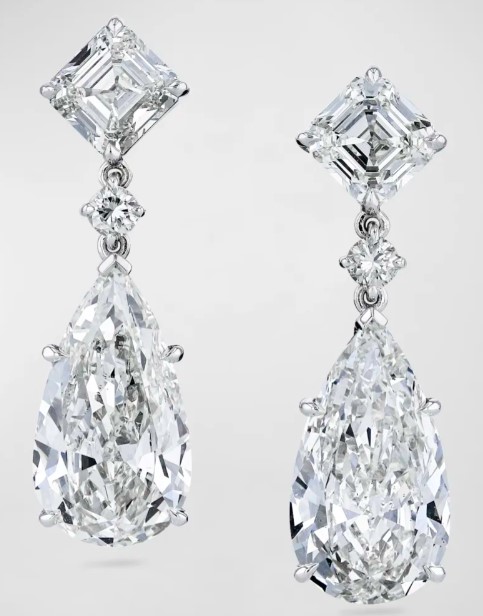Ever wonder why we’re so mesmerized by gemstones? Sure, they’re sparkly, but they’re also like glittery time capsules. Cleopatra was all about those emeralds, and let’s face it, sapphires are still pretty beguiling. For ages, these stones have been wrapped up in the mystique of love and power. They dazzle today just as much as ever. Diamond’s classic twinkle or a topaz’s warm glow—each has its own charm. Thinking about precious versus semi-precious? Just old-school terms. Diamonds, rubies, sapphires, and emeralds get all the “precious” love, but what about amethysts and aquamarines. They’re show-stoppers too. Every stone, from deep blues to fiery reds, spins a yarn in its own hue. The magic? It’s not in size but that perfect color and clarity. So next time you eye a gemstone, think: what’s its story? If you’re eyeing some bling for the holidays, make sure you’re hearing its whisper too!
Precious Gemstones
Precious gemstones are the rock stars of the jewelry world. Think of them as nature’s little show-offs. You’ve probably heard of the big four: diamonds, rubies, sapphires, and emeralds. They’re rare, stunning, and tougher than a rock star’s reputation. Ever wondered why they’re super pricey? It’s because they’re like unicorns—hard to find and always in demand. People love gifting them for weddings, engagements, or just to say “you’re special.” Wearing these gems feels like wrapping a piece of history around your finger. Ever looked at a sparkling gem and felt like you were staring into the universe? That’s the magic they hold. So, what would you choose for your own treasure trove—something sparkly or something vibrant? The Gemstone Encyclopedia provides detailed information for any gemstone you are interested in.
Rare and Semi-precious gemstones
Rare semi-precious gemstones are like the cool cousins at a family reunion. You’ve got alexandrite, tanzanite, and the rest, like tourmaline and peridot, adding flair to any jewelry collection. Sure, they don’t cost as much as diamonds or rubies, but they add their own sparkle to the mix. They attract those who want something eye-catching without the hefty price tag. Plus, folks chatter about their mystical powers—maybe they’ll bring calm or kickstart your creativity. Whether you’re in it for the sparkle or the vibes, these gems deliver in style. Who’s worried about a pricey gem when there’s a rainbow of options waiting for you? Think alexandrite, tanzanite, tourmaline, peridot, opal, jade, jasper, kyamite, amethyst, turquoise, rose quartz, topaz, blue topaz, aquamarine, moonstone, and garnet.
Synthetic Gemstones
Synthetic gemstones are a lab’s version of magic. Picture scientists whipping up stones that mimic nature’s best, without a pickaxe in sight. They’re just as tough and shiny as the ones dug from the earth. It’s a clever mix of science and a bit of tech know-how. Ever think about how they pack all that sparkle into a lab setting? It’s all about mastering every little detail for ultimate shine. So, the next time a dazzling gem catches your eye, ponder a moment—is it nature’s work or a lab’s crafty creation?
Imitation Gemstones
Imitation gemstones are like cheeky magicians in the jewelry box, winking at your wallet with their glittery charm. Made from glass or plastic, these gems love to put on a sparkly show. Ever see a necklace that flirted with you across the room? That’s a faux stone working its magic. You pop on imitation gems when you want to jazz up an outfit without blowing the budget. Sure, they don’t have the depth of real jewels, but they pack a fun punch. It’s like wearing splashy bling without the financial hangover.
Gemstone Properties and Characteristics
Color
Color grabs the spotlight when it comes to a gemstone’s value and allure. Why? Well, it’s all about hue, tone, and saturation. Imagine hue as the gemstone’s signature color—think red, blue, or green. Tone steps in to decide how light or dark this color goes. Is it more of a sunny day or a moonlit night? Then there’s saturation, the superstar of the trio, making sure the color is either popping with vibrancy or slightly muted. When a gemstone nails all three, it’s like a rainbow in your pocket. So, when picking gems, eye these factors like a pro. Got a favorite gem hue? Or a shade you adore? Let your choice shine!
- Hue: The basic color of the gemstone, such as red, blue, or green.
- Tone: The lightness or darkness of the color. Gemstones can range from very light to very dark.
- Saturation: The intensity or purity of the color. Highly saturated colors are vivid and rich, while less saturated colors may appear dull or washed out.
Hue
Ever wondered why gemstones sport such dazzling colors? It’s all about those trace elements! Chromium steps in to give emeralds that lush green and turns rubies fiery red. Think of iron as the chameleon of the gem world, painting everything from sunny yellows to earthy browns. And then there’s titanium, the secret sauce for that breathtaking sapphire blue. These little elemental quirks make nature’s bling all the more mesmerizing. What color stories lie in your favorite gems? Let’s hear your gem tales!
- Chromium: Gives emeralds their green color and rubies their red color.
- Iron: Can produce yellow, green, or brown hues in various gemstones.
- Titanium: Contributes to the blue color of sapphires.
Clarity
Imagine holding a gemstone that’s not just pretty, but also nearly perfect. That’s what clarity is all about. Fewer flaws mean a gem shines brighter and fetches a higher price. Inclusions and blemishes are a bit like freckles on gems. They give character, sure, but too many and you’ve got a problem. When you peer into a high-clarity gem, you want it to look like a clean, sparkling pool where every detail pops. Next time you’re checking out gemstones, don’t just get dazzled by color. Take a moment to see how clear and clean it really is. Got a favorite gemstone with impeccable clarity? Time to brag!
Inclusions
Imagine you’re peering into the heart of a gemstone. What do you see? Little worlds trapped inside, each with its own story. Crystals, tiny hitchhikers, hang out in there. Liquids make little pockets of mystery, and gas bubbles might cause the stone to “burp” if it could. These inclusions aren’t just about looks. They have a big say in the clarity and value of the gem. It’s like each gemstone carries a secret diary of its birth, and each inclusion is a chapter of its tale. So next time you admire a gemstone, remember—it’s what’s inside that counts.
- Crystals: Other minerals embedded within the gemstone.
- Liquids: Pockets of fluid trapped inside the stone.
- Gas bubbles: Air pockets within the gemstone.
Cut
Imagine a gemstone with just the right sparkle, drawing you in like a disco ball at a party. That’s the magic of a great cut! First up, you’ve got proportions. These are the measurements that make sure everything’s in harmony. Then, there’s symmetry—those facets better line up like soldiers standing at attention. And don’t forget polish, because nobody likes a rough surface. It’s all about reflecting light perfectly to dazzle every eye in the room. Think of a well-cut gemstone as the diva of the jewelry world, always ready to steal the spotlight. So, which gem do you think wears it best?
- Proportions: The relative dimensions of the gemstone.
- Symmetry: The balance and alignment of the facets.
- Polish: The smoothness of the gemstone’s surface.
Shape
Gemstones come in all kinds of shapes, each with its own charm. Craving sparkle? Round gems have got you covered with their dazzling brilliance. Want a gem that looks larger than life? Go for an oval. It’s like magic for your eyes! If elegance is your thing, the emerald cut, with its chic rectangles and clipped corners, is a classic choice. The princess cut is perfect for fans of sleek, sharp lines, offering a modern vibe with its square or rectangular form. Fancy something unique? The pear shape, like a teardrop, offers a fun twist, marrying the best of round and marquise shapes. So, what’s your pick for the perfect sparkle?
- Round: The most popular shape, known for its brilliance.
- Oval: An elongated shape that can make the gemstone appear larger.
- Emerald: A rectangular shape with truncated corners, known for its elegance.
- Princess: A square or rectangular shape with pointed corners, known for its modern look.
- Pear: A teardrop shape that combines the round and marquise shapes.
Carat Weight
Carat weight is basically the gem’s diet plan. One carat is a neat 0.2 grams. That teeny weight packs a punch! Bigger gems are like unicorns in the wild—super rare and often pricier. But let’s not get too attached to size alone. A gem’s value also plays with color, clarity, and cut. Imagine it like baking a cake: it’s not just the flour that makes it delicious. So, next time you’re eyeing that sparkling stone, think beyond the scale. Is it sparkling just right? Is its color swoon-worthy? Those are the real questions!
Size
Ever wonder why some gems look bigger than others even if they weigh the same? It’s all about that carat weight and shape combo. Picture this: you’ve got a marquise or an oval. They stretch out like they’re showing off at a gem fashion show, tricking the eyes into seeing more bling. On the flip side, a round shape keeps it classically cute, but doesn’t flaunt its size. So when eyeing that next sparkling stone, remember—it’s not just the weight but how you shape it that counts.
Hardness
Want to know how tough your favorite gemstone is? Let’s talk Mohs scale, your go-to for gauging how scratch-prone a gem might be. It ranks stones from 1 to 10. The higher the number, the harder it is. Diamonds, scoring a solid 10, are the champs—scratch-resistant and shiny. Rubies and sapphires sit at 9, ready to hold their own. Topaz comes next at 8, still quite strong. Quartz, including amethyst and citrine, ranks at 7, doing alright in everyday situations. Then we have feldspar at 6, which is okay but needs a bit more TLC. Remember, more hardness means less worry about scratches! What’s your gem of choice?
- Diamond: 10 (hardest)
- Corundum (Ruby and Sapphire): 9
- Topaz: 8
- Quartz (Amethyst, Citrine): 7
- Feldspar (Moonstone, Sunstone): 6
Durability
Ever wondered why some gemstones stay dazzling forever? It’s all about their durability! Picture this: hardness is like a stone wall, keeping scratches at bay. Toughness? That’s your gemstone’s secret ninja move—it won’t chip or crack under pressure. Then there’s stability, which is like your gem’s little invisible shield, protecting it from heat, light, and chemicals. So, when you wear that gem on a sunny day or during a stylish night out, it stays just as fabulous. In the game of gems, these three traits are the all-stars. What’s your favorite gemstone superpower?
Summary
Think of gemstones as nature’s tiny treasures. Their charm isn’t just about sparkle; it’s all about the 5 C’s—color, clarity, cut, carat, and durability. Color brings that wow factor. Clarity tells the tale of its journey underground. A perfect cut boosts its beauty, while carat gives it weight and worth. Durability ensures it lasts the ages, just like true love. So next time you admire a gemstone, remember, it’s a mix of art and science that makes it a timeless gem. Curious about your fave stone? It’s got a story—waiting for you to discover.

Hey there! I’m Danille from Beautiful Over 40ish, and I’m so glad you’re here! Got a moment? Let’s jump into some styling magic. Forget the skim and stay for the sparkle. If you’re all about classy and timeless looks, you’re in for a treat. Love what you see? We’ve got loads more where that came from. Visit our site to refresh your look with tips that keep you polished and chic. It’s a treasure trove you’ll want to explore! https://beautifulover40ish.com/
Discover more from Beautiful over 40ish
Subscribe to get the latest posts sent to your email.




